SPAIN
Economy

Economy
Cities in SPAIN
| Barcelona | Benidorm | Bilbao |
| Blanes | Madrid | Nerja |
| Salou | Torremolinos | Valencia |
Popular destinations SPAIN
| Andalusia | Catalonia | Costa blanca |
| Costa brava | Costa del sol | El hierro |
| Formentera | Fuerteventura | Gran canaria |
| Ibiza | La gomera | La palma |
| Lanzarote | Mallorca | Menorca |
| Tenerife |
Economy
General
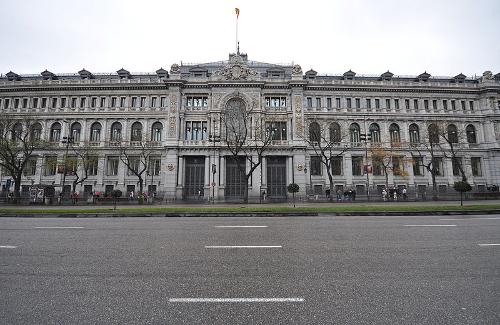 Central bank of Spain in MadridPhoto: Jorge Láscar CC 2.0 Generic no changes made
Central bank of Spain in MadridPhoto: Jorge Láscar CC 2.0 Generic no changes made
Spain has long remained an agricultural country. It was not until the late 1950s that a start was made on building an industry that quickly became a major economic sector. The service sector has also undergone enormous development. Internationally, Spain is currently the fifth largest industrial country in Europe, with the automotive, steel and chemical industries as the most important industries. Shipyards are also among the most important in the world. Other important sources of income are, of course, tourism, but also still the money that emigrated workers transfer to Spain.
The structure of the labor force changed considerably due to the rapid economic growth. In 1999, for example, only 7.3% of the labor force worked in agriculture; in 1950 this was still about 50%. Per capita income also rose dramatically from $ 500 in 1960 to $ 18,239 in 1999.
The lack of technically trained personnel was one of the main causes of the economic downturn in the 1970s. Much of the industry had focused on the production of cheap mass products that could be made much cheaper in developing countries. Exports of those products declined rapidly, but heavy industries also found it increasingly difficult to sell their products. Unemployment rose quickly as a result and an economic crisis was a fact.
In the 1980s, economic policy was dominated by the imminent accession to the European Union in 1986. In the early 1990s, economic growth slowed again but recovered after 1996. Only unemployment remained a major problem because officially still 20% of the working population is unemployed.
Spain went through a protracted recession in the wake of the global financial crisis. GDP declined 3.7% in 2009, ending a 16 year trend of growth. The contraction continued until the end of 2013. Economic growth resumed at the end of 2013, albeit modestly, as private sector credit, fiscal austerity and high unemployment negatively impacted domestic consumption and investment. The export sector remained resilient during the economic downturn, partially offsetting the decline in domestic consumption and contributing to Spain's balance sheet surplus in 2013 for the first time since 1986. Unemployment rose from a record low of about 8% in 2007 to more than 26% in 2013. Spain's budget deficit peaked (or rather bottomed out) of 11.4% of GDP in 2009. This was caused by the decline in Spanish public finances, the increase in social spending. benefits increased and tax revenue decreased. Spain gradually reduced the deficit to just under 7% of GDP in 2013. Government debt has increased significantly from 60.1% of GDP in 2010 to 98.4% in 2017. Increasing labor productivity, lowering labor costs and lower inflation has contributed to lowering investor interest and the cost of government debt. The government is making constant efforts to implement reforms in labor, retirement, health, tax and education. Efforts are aimed at improving investor sentiment. Some figures about the economy in 2017 are: Economic growth 3% and the Gross Domestic Product per capita is $ 38,400
Arable farming, livestock farming, forestry and fishing
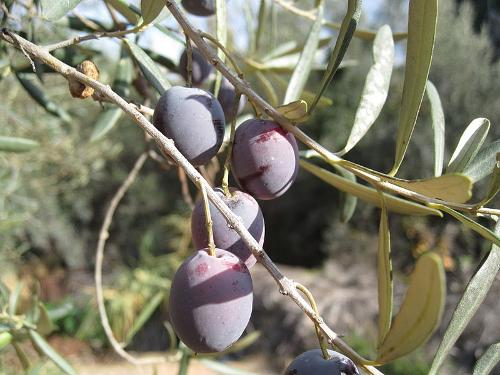 Olives SpainPhoto: Bj Schoenmakers in the public domain
Olives SpainPhoto: Bj Schoenmakers in the public domain
Since 1950, the share of agriculture in the gross national product (GNP) has fallen sharply to 2.6% in 2017. Large land holdings still exist in Central and Southern Spain, but most farms do not exceed 10 ha.
Wheat is grown all over Spain, potatoes in the northern coastal regions and rye and barley in Castile and in the northern provinces. Viticulture and the production of olive oil are important for exports. Spain is the third largest wine producer in Europe and the largest olive oil producer in the European Union. Other important products are sugar beet, flax, corn, tobacco and cotton.
As far as horticultural products are concerned, Spain is the largest producer in Europe and even fifth in the world of citrus fruits. The citrus fruit production naturally takes place mainly in the sunny regions, the Mediterranean coast, Andalusia and the region around Valencia.
Livestock farming makes up approximately 40% of total agricultural production. Livestock farming in particular occupies an important place, due to the ever-increasing demand for meat. A well-known cattle area is Galicia with its pasturage. A special industry is bull breeding in the area of Madrid, Seville, Salamanca and Córdoba. These bulls are bred for bullfighting.
Catalonia has large pig farms, which largely supply Spain with pork.
Sheep are mainly kept on the vast high plains in the center of the country. Most dairy farms can be found in Cantabria, Galicia, Asturias and Basque Country. The Madrid region has many chicken farms.
Forests cover 33% of the total area and the aim is to increase this percentage. This forest planting is intended, among other things, to combat the increasing erosion, which has ensured that 13% of Spain is desert-like.
One of the main forest products is cork, which comes from the cork oaks from the extensive oak forests in Extremadura. Many Spanish forests are owned by the state and the municipalities.
Spain is one of the largest fishing countries in Europe, only Russia, Norway, Denmark and Iceland are even bigger. Both the Mediterranean and the Atlantic Ocean are mainly fished for tuna, cod and sardines. In Galicia, fishing is an important source of income. The Spanish fishing fleet consists of approximately 17,000 ships. Half of these are inshore fishing vessels in northwestern Galicia. Europe's largest fishing port is Vigo, on the Spanish west coast in northwestern Galicia. Here are also approximately 2000 vessels suitable for deep-sea fishing. Per capita consumption of fish is the second largest in the world after Japan.
Industry, mining and energy supply
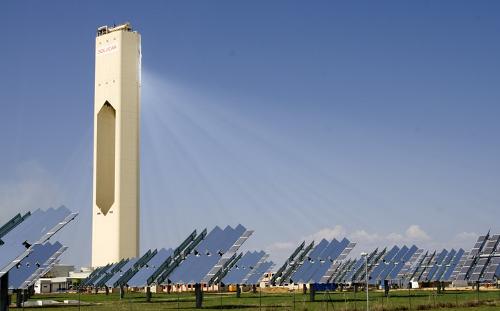 Solar thermal power plant in SpainPhoto: Afolresm CC 2.0 Generic no changes made
Solar thermal power plant in SpainPhoto: Afolresm CC 2.0 Generic no changes made
Industry contributed 23.2% to GDP in 2017. The main industrial areas are in the provinces of Barcelona, Madrid, Valencia, Vizcaya, Asturias, Alicante and Zaragoza. Important sectors are petroleum refining and chemicals and the production of transport equipment and electrical machines. The textile and heavy industry are currently less important than they used to be.
Spain is one of the largest producers of tools and machines in Europe. Most of the companies are located in the Basque provinces of Guipuzcoa and Vizcaya, in addition to Catalonia, and Aragón.
The construction sector has traditionally been important and a large part of the workforce is employed in this sector. Residential construction is the largest sub-sector, followed by restoration and maintenance, infrastructure works and non-residential construction. Over time, the infrastructure sub-sector is expected to become increasingly important to the construction industry.
Spain is an important production country, especially in the field of small passenger cars. About 2 million employees work in the automotive industry. Spain is very interesting for French and German car manufacturers due to its relatively low labor costs (half the German labor costs!).
Thanks to, among other things, substantial investments and automation, Spanish shipbuilding is flourishing again and the shipyards have a richly filled order book again. The restructuring has ensured a competitive and high-quality shipbuilding industry.
More than a thousand companies are active in the chemical industry. Three of the largest companies in the raw material chemistry are of German origin. Approx. 90% of the companies work locally or for the region and have a modest annual turnover. The pharmaceutical industry is mainly located in the Madrid and Barcelona area.
The Spanish textile and clothing industry, especially in Catalonia, Valencia and Galicia, has almost 8,000, mostly small companies. Within the European Union, Spain is fifth on the list of textile manufacturers. The textile industry had a very difficult time in the early 1990s due to competition from East Asia, but is now recovering from the recession.
The Spanish leather goods industry still occupies an important place in the world market. The shoe industry mainly consists of small companies. The highest production growth was achieved in the bags and small leather goods sector. The fur industry is also flourishing in Spain, with nearly 3000 companies and 27,500 employees.
Spain is relatively rich in minerals. The main mining products are coal, lignite, iron ore, zinc ore and lead. Other minerals that are extracted are tungsten, potash, mercury and uranium. Petroleum is extracted at the mouth of the Ebro.
The main energy sources in Spain are hydro and thermal electricity and, in addition, increasingly solar energy. But nuclear energy is also very important for the electricity supply. Natural gas is mainly imported from Algeria.
Trade
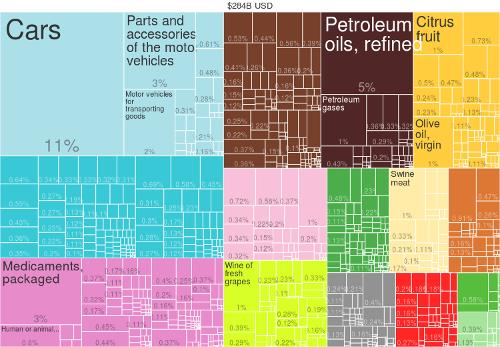 Export SpainPhoto: Celinaqi CC 4.0 International no changes made
Export SpainPhoto: Celinaqi CC 4.0 International no changes made
The main exports are wine, tropical fruits, cars, machinery, textiles and ores.
Imports are mainly fuels, means of transport, foodstuffs, machinery and chemical products.
The most important trade partners in terms of imports are: France, Germany, China, Italy, United Kingdom and the Netherlands. In terms of exports, the main trading partners are France, Germany, Portugal, Italy and the United Kingdom.
The total value of exports was $ 314 billion in 2017 and the total value of imports was $ 339. So Spain has a negative trade balance.
Traffic
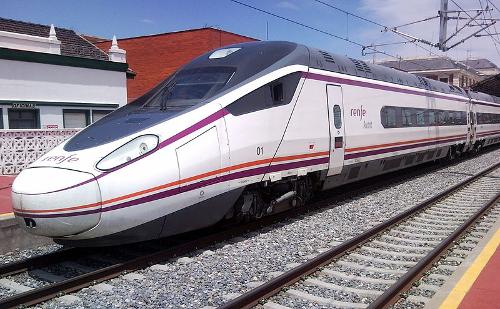 Hi speed train SpainPhoto: Rastrojo CC 3.0 Unported no changes made
Hi speed train SpainPhoto: Rastrojo CC 3.0 Unported no changes made
The rail network is operated by the RENFE and covers a total of more than 15,000 km. Not all routes still meet European standards. Rail traffic is constantly being expanded to reduce the position of road traffic.
Spain has more than 68,000 registered road transport companies, of which 48,000 companies do not own more than one truck. But 35 companies have more than sixty cars. The Spanish transport market therefore consists largely of self-employed drivers who are mainly engaged in domestic transport. International road transport is in the hands of only five large companies. The road network has a length of more than 350,000 km, of which 16,000 km is highway. The major cities are interconnected by highways and most of the cities are ring roads.
The main ports are Barcelona on the Mediterranean and Bilbao on the Atlantic. The Catalan port of Tarragona is the third largest port in Spain and especially important as a terminal for oil and chemicals. Valencia, Gijón, Tenerife and Las Palmas also have important ports. The ports on the Mediterranean are currently growing twice as fast as the Atlantic ports.
There are many international airports, including Madrid, Barcelona, Palma de Mallorca, Las Palmas, Malaga, Tenerife and Ibiza. The national airline is Iberia. Madrid's Barajas airport is the largest in Spain.
Sources
Grabowski, J.F. / Spain
Lucent Books
Spain
Lonely Planet
CIA - World Factbook
BBC - Country Profiles
Copyright: Team The World of Info